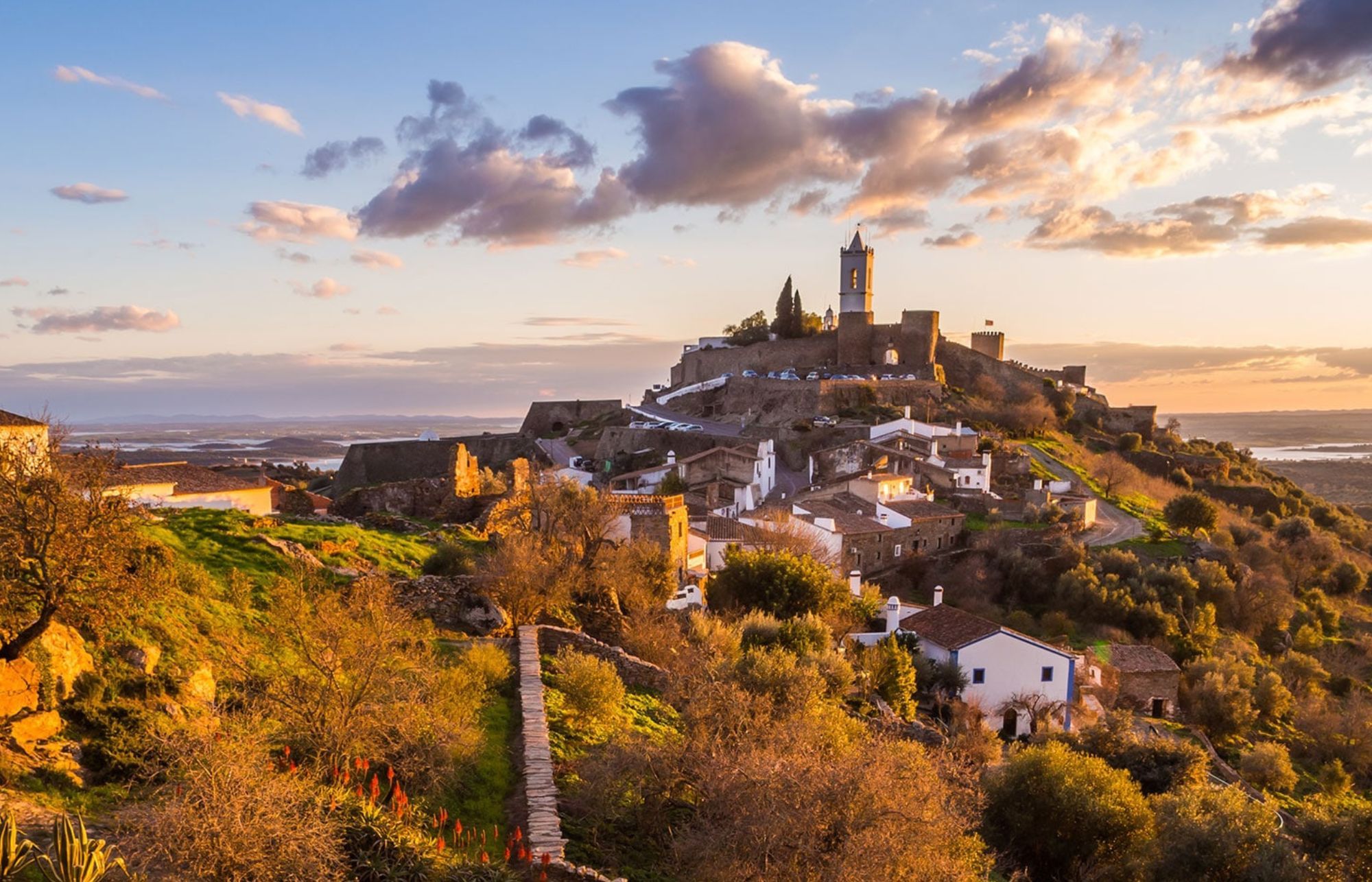“If I have an MW coming to lunch, and I want to open something with novelty, quality and consistency,” exuded Dirceu Vianna Junior MW, “Portuguese wines do the job every time.”
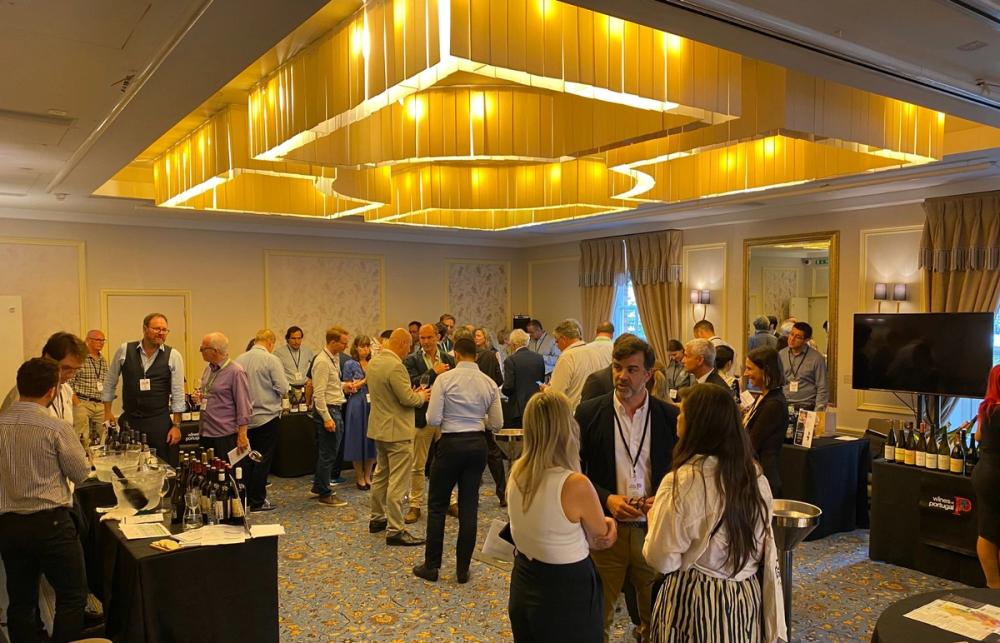
Wines of Portugal tasting, London, September 11, 2023
“In an increasingly globalised world, it seems we are all looking for something authentic and different. That’s what the wines of Portugal can offer.” These were the opening words of wine raconteur extraordinaire, Dirceu Vianna Junior MW, as he addressed the keen audience at his masterclass at the Wines of Portugal tasting earlier this month. And he’s not wrong.
Portugal is not a large country. Measuring just 600km from the northern valleys and hills of Vinho Verde to the southern beaches of the Algarve, and a nudge over 200km from the Atlantic in the west to the mountainous border with Spain in the east. Its selection of native grapes, planted across its under-appreciated plethora of soils and structures, and under incredibly distinct micro-climates are continuing to offer new ideas and tastes every vintage. This year’s Wines of Portugal tasting line-up was no exception.
The rise of the still wines of Portugal

Dirceu Vianna Junior MW: 300 clones of Touriga Nacional alone
For centuries Portuguese wines have been synonymous with the fortified wines of the Douro Valley or Madeira, and the scores of British families making their fortunes by producing them and then shipping them back to Blighty. The recent history of still wines is more varied. For most of the 20th Century large co-operatives with little incentive to improve quality ran the show. Mega brands such as Mateus and Lancers were the great success story, but these were very much the exceptions rather than the rule.
Since political changes in the 1970s, however, that led to accession to the EU in 1986, the quality of Portugal’s still wines have taken off. Less restrictions on production, and access to loans and grants for better equipment and techniques, led to a new wave of producers beginning to make and market their own wines with an incentive to produce quality wines fit for export. In 2023, nearly 50 years on, that progress shows no signs of slowing down as confidence up and down the country continues to build.
Native grapes shining bright

One of the most successful aspects of the rise of Portuguese wines is that producers are embracing the native grapes up and down the country. According to the marketing material, Wines of Portugal recognises over 250 native varieties, with research into clonal selection producing eye-watering permutations available to growers.
“Every time I go there someone else offers me something new to try,” revealed Dirceu Vianna Junior MW. “There are now up to 300 clones of Touriga Nacional alone, and they’re all behaving differently.” Not only does that bode well for the challenges of climate change, but gives producers plenty of options to fill their portfolios with a whole host of different wine styles.
The famed red grapes of Touriga Nacional, Touriga Franca and Tinta Roriz are now being joined by wonderful examples from the like of Baga in Bairrada or Alicante Bouschet in Alentejo. The whites of Alvarinho and Fernão Pires are complemented by the exciting Encruzado from Dão and Antão Vaz in Alentejo. Not only that, but these names that are appearing on labels and grapes, once thought of as too niche, are now becoming sought-after varieties.
Soils and climates to cope with a changing climate
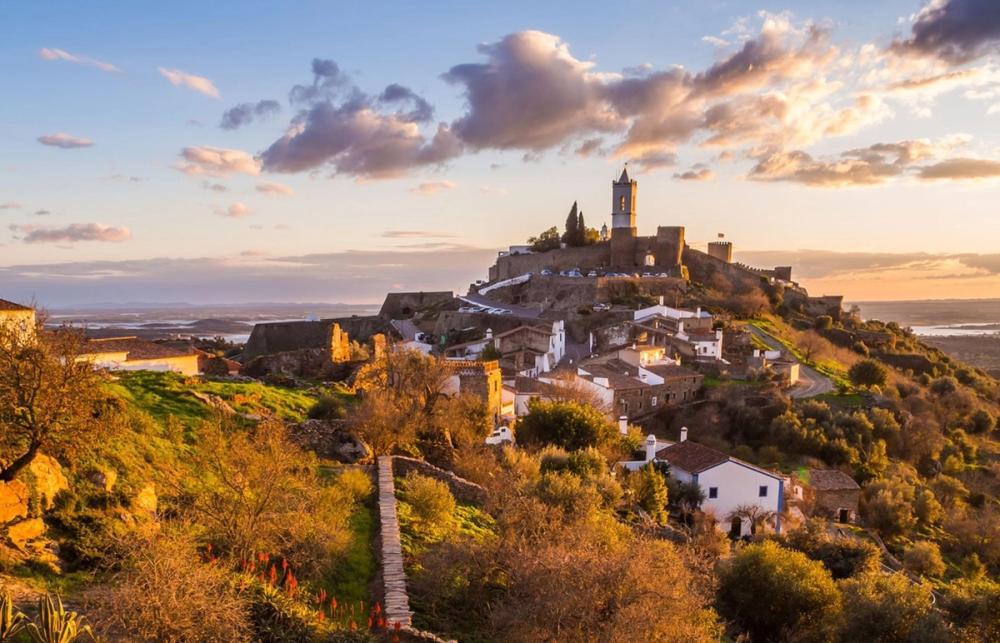
Learning about the soils of Portugal usually makes for a fairly quick read. Inland, mountainous areas are granite or schist, river valleys are alluvial, and coastal regions are a mix of clay-limestone and sand. If only it were that easy. “The Douro Valley contains at least 60 different types of schist alone,” continued Dirceu Vianna Junior MW, “but also has crops of granite and limestone. These soils are very complex and co-exist perfectly.”
Despite the heat in many areas, especially inland and to the south, many regions have natural mitigating factors that allow for micro-climates that are currently coping well with the changing climate. Mountain ranges, valleys, and coastal weather patterns combine to allow for ripe but fresh wines from across the native varieties.
It’s getting increasingly well known that you should expect good acidity from Dão with its inland mountain ranges giving freshness at altitude and protection form warmth to the east and south. The same is true for the mountainous areas of the larger Alentejo region to the south. With over 2,000 hours of sunshine each year, the summers can be searingly hot, but altitude in places like Portalegre sees vines planted at up to 700m, providing vital cooling effects to a region that recently recorded Portugal’s warmest ever day time temperature… 47.4oC in Beja if you’re interested!
Other climatic conditions, lauded in other parts of the world, go relatively unnoticed in Portugal. The Tejo region can show a marked freshness with the fogs rolling up the river valley from the Atlantic. In a scene reminiscent of the famous cooling effect of the San Pablo Bay on Napa, this fog cools the land and underpins the freshness of the grapes. This dense fog brings moisture to the vineyards during the growing season before being blown away by mid-morning to avoid disease pressure.
The many indigenous grapes, grown across a vast array of soils that are still being researched and understood, and the multitude of micro-climates on offer contribute to Portugal continuing to produce some of the most interesting wines in the world. “If I have an MW coming to lunch, I want to open something with novelty, quality and consistency,” exuded Dirceu Vianna Junior MW, “and Portuguese wines do the job every time.”
My mixed case of picks from the Wines of Portugal tasting
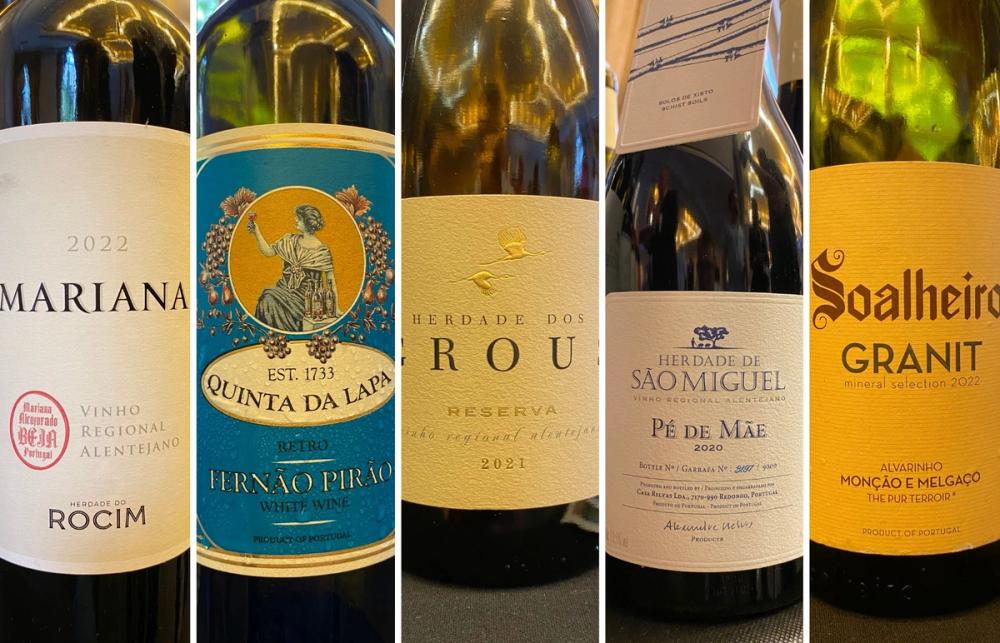
Herdade de Rocim, Mariana 2022, Alentejo
This is actually the entry level red from this impressive Alentejo-based producer, but warranted a place in my top ten for its insanely good value for money. The wine is a blend of a veritable who’s who of Portuguese red varieties with Aragonez, Trincadeira, Alicante Bouschet and Touriga Nacional. The wine has a beautiful ruby colour, with ripe red fruits joined by a pretty rose petal perfume. There is some grippy tannin, but you could quite easily chill this down on a sunny afternoon. Imported by Hallgarten Novum Wines, DPD £9.89
Quinta Da Lapa, Retro Fernão Pires, 2021, Tejo
From one of the oldest estates in the Tejo region, I’ve never tasted a Fernão Pires this interesting before. The juice spends seven days macerating with the skins for extra body and depth with additional lees stirring after fermentation. Full bodied, with pronounced lemon citrus, stone fruits, butterscotch and a palate-cleansing herbal kick to the end. Available on request from Marta Vines, DPD £12.00
Herdade Dos Grous Branco Reserva, 2021, Alentejo
One of the shining lights of the resurgence of Alentejo wineries, Herdade Dos Grous is spread over 1000 hectares with vineyards, olive groves, cork forests and a stylish hotel. They also make fabulous wines. The Branco Reserva is a blend of Antão Vaz, Arinto, Alvarinho and Viognier. After fermentation and blending, the wine is subject to three months batonnage in a mixture of new and old oak barriques. A beautiful mix of citrus, stone, tropical fruits, with hints of vanilla and smoke and a creamy texture on the palate. Imported by Marta Vines, DPD £14.48
Herdade de São Miguel, Pé de Mãe 2020, Alentejo
From around the vineyards of Porto Alegre, this Trincadeira blend is the last thing you’d expect from a supposedly hot inland area. The grapes have very thin skins and need delicate extraction, which includes leaving 20% with stems still intact for extra bite and freshness. Vinification is finished with 18 months in 5000-litre old oak barrels. Delicate but super intense ripe red fruits and black pepper spice, so much length, incredibly classy wine from winemaker Alexandre Relvas. Imported by Raymond Reynolds, DPD on request
Quinta de Soalheiro, Soalheiro Granit, 2022, Vinho Verde
Soalheiro are a Portuguese icon, famed for producing 100% Alvarinho from the northerly Vinho Verde region of Melgaço. The range of classy white wines that show off the true potential of Vinho Verde is something to be marvelled at. On the day I was most taken by the Granit, with beautiful ripe apricots, quince, lemons and lemon grass joined by smokey, stoney notes on the palate and a zingy but balanced freshness. This is a dangerously drinkable wine. Imported by Raymond Reynolds, DPD £12.90
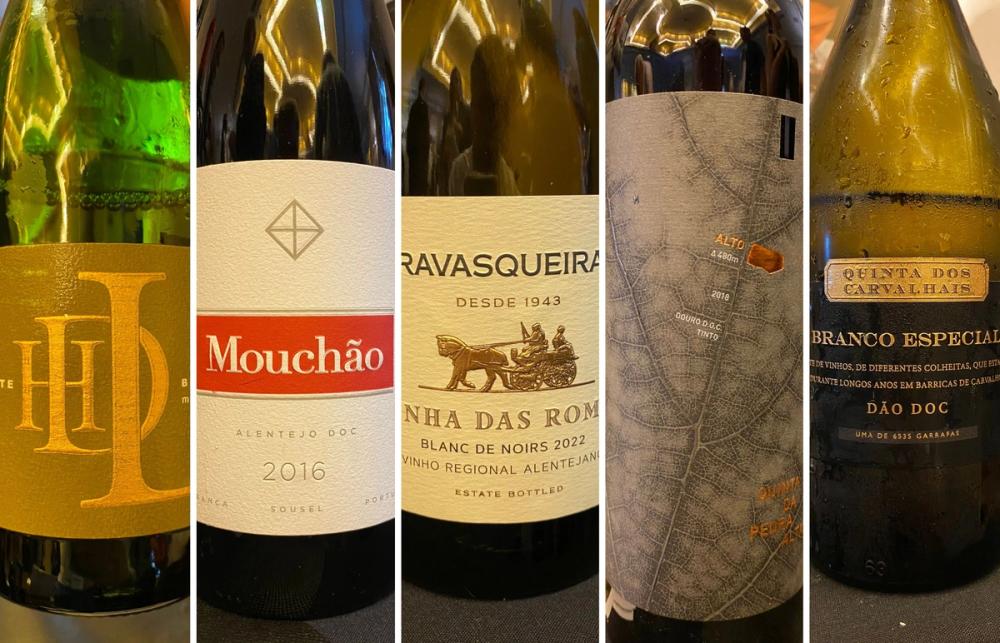
Herdade Dos Lagos, Espumante Blanc de Noir, 2018, Alentejano
Portugal produces lots of great sparkling wines from the traditional method but, of course, most of it doesn’t leave the country. The market for sparkling wines is seriously competitive, so it needs something really unique to make a difference. This organic, 100% Aragonez blanc de noir was almost like drinking a light and delicate cheesecake, with ripe strawberries and cranberries joined by biscuit notes from 18 months on the lees, a creamy mousse and slight sweetness from a touch of residual sugar. Really fun and well-made wine. Something different for your sparkling wine list. Imported by Vintage Roots, DPD £20.00
Mouchão Vintage 2016, Alentejo
A mix of 85% Alicante Bouschet and 15% Trincadeira. Mouchão are one of the most minimalist wineries in the game, with electricity only arriving in the winery in the late 1980s. The grapes are pressed, vinified, and then spend four years in large oak vats of 5000-litres. That’s it. The result is a beautiful shiny wine in the glass, with deep aromas of dark plums and berries, balsamic, liquorice and chocolate, along with ripe and grippy tannins but plenty of aromatic freshness and acidity. Drinking beautifully now but definitely one for ageing. Imported by ABS Wine Agencies, DPD £60.00
Ravasqueira Vinha Das Romãs, Blanc de Noirs 2022, VR Alentejano
A really fun wine this one, a still Blanc de noirs from a blend of Touriga Franca and Syrah. Pressed and fermented for the first part in stainless steel before being transferred to new French oak barrels to finish fermentation, with frequent battonage and a further six months resting. The wine is packed with red apples, yellow plums, white pepper, lemon and lime citrus, a distinct smokiness and a creamy mouthfeel. Imported by ABS Wine Agencies, price on application
Quinta da Pedra Alta, Alto 2018, Douro
Quinta da Pedra has a couple of red wine cuvées that they only produce in years they deem worthy, those being the Alto and the Rio. The names give the game away, with the Alto planted in the hills of the Cima Corgo at around 500m, and the Rio down towards the banks of the Douro at 275m. The Alto won it for me by a nudge, with lifting balsamic and violet petal notes to add to the fresh dark fruits and smooth tannin of this Touriga Nacional, Sousão and Fernão Pires blend. Imported by Bancroft Wines, DPD £29.45
Quinta dos Carvalhais, Branco Especial NV, Dão
The absolute stunner of the piece has to be left to the end. This white is made from a blend of Encruzado, Gouveio, Semillon and a field blend of other varieties; the winemaker vinifies its components separately (apart from the field blend of course), with whole-bunch-pressing into oak barrels for fermentation. The components, when blended, have an average age of six years old, leaving an incredible complexity of stone, citrus and tropical fruits, honey, vanilla and nutty notes. May sound a lot, but this would be three times the price if it was from Burgundy! Imported by Liberty Wines, DPD £32.85
For more information about The Wines of Portugal, please contact Cátia Fonseca on catia@thewineagency.pt
Mike Turner is a freelance writer, presenter, educator, judge and regular contributor for The Buyer through his editorial company Please Bring Me My Wine. He also runs a wine events and ecommerce business, Feel Good Grapes, that explores and discusses the idea of sustainability in the wine trade.
